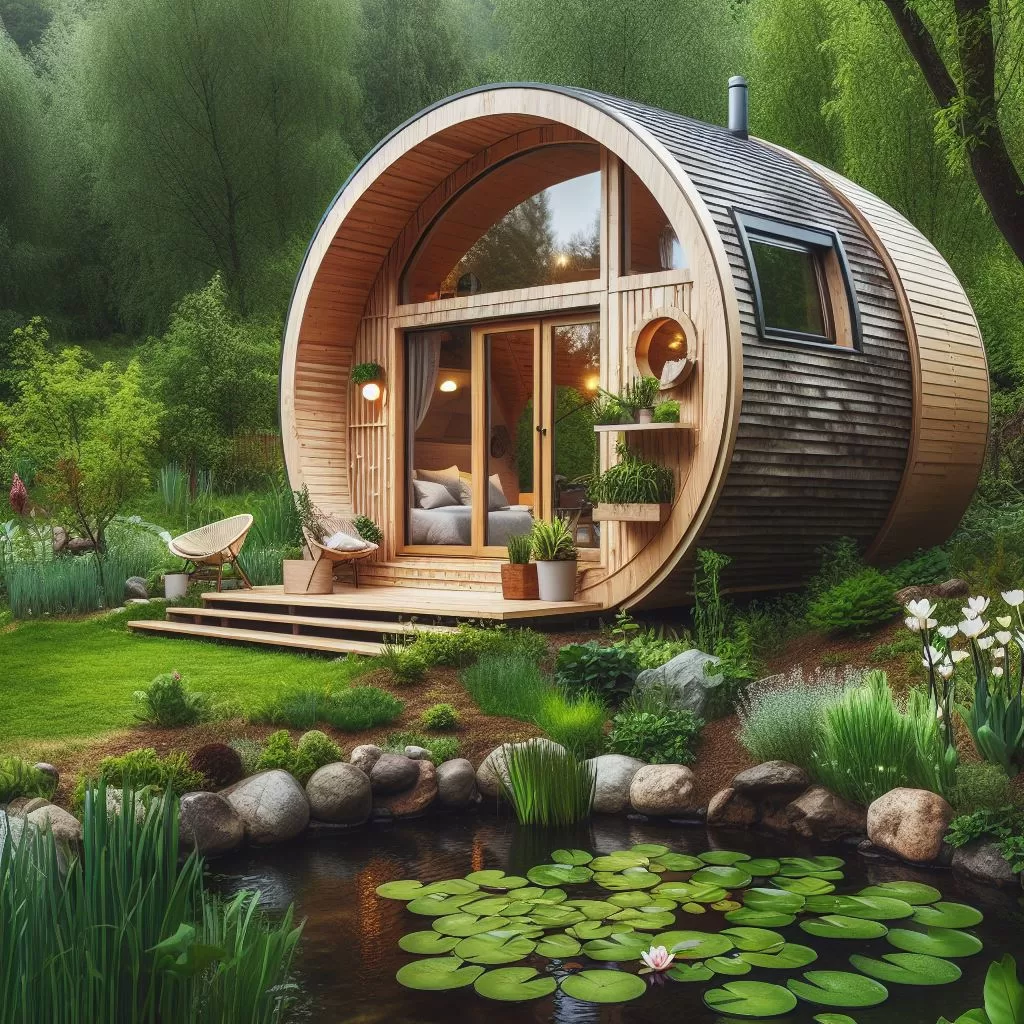In a world where bigger often seems better, the concept of tiny homes has gained tremendous popularity. These pint-sized residences are not just about minimalism and downsizing; they have given birth to a new way of living – tiny home communities. In this blog post, we will explore the emergence of tiny home communities and the profound sense of camaraderie they offer. We’ll delve into the benefits of communal living, shared resources, and the vibrant social aspects of tiny home neighborhoods.
The Rise of Tiny Home Communities
The notion of living in a tiny home, although not new, has gained significant traction in recent years. People are increasingly drawn to the idea of simplifying their lives, reducing their environmental footprint, and finding innovative housing solutions in the face of rising real estate costs. Tiny homes provide an affordable alternative for individuals and families looking to own their own piece of the property ladder.
However, tiny home living goes beyond just the structures themselves. It’s about fostering a strong sense of community, and this is where tiny home communities come into play. These communities are springing up in various locations, from urban areas to picturesque rural settings. They consist of clusters of tiny homes designed to encourage interaction, shared resources, and a greater connection to one another.
Benefits of Communal Living
Communal living is a lifestyle that transcends the traditional boundaries of homeownership and privacy, offering a unique blend of shared spaces and a sense of togetherness. In this section, we’ll delve into the myriad advantages of communal living, from shared resources and a profound sense of belonging to sustainable living practices. Discover how embracing this lifestyle can lead to a richer, more fulfilling way of life that goes beyond the confines of individual living spaces.
- Shared Resources: One of the fundamental pillars of life in a tiny home community is the pooling of resources, which leads to significant cost savings and numerous other advantages. In these close-knit neighborhoods, residents come together to make the most out of shared amenities, such as communal laundry facilities, community gardens, and well-equipped communal kitchens. These shared spaces reduce the need for individual investment in appliances, gardening tools, or kitchen equipment. Not only does this result in substantial financial savings for each resident, but it also contributes to a noticeable reduction in environmental impact through resource sharing. When several households share a single high-efficiency washer and dryer, for example, it translates into fewer machines in use and less energy consumption, which aligns perfectly with the sustainability ethos that often defines these communities. Additionally, shared gardens provide an opportunity for everyone to access fresh produce without the need for large-scale agricultural practices or long transportation routes. In essence, shared resources in tiny home communities offer a win-win scenario, where financial savings and ecological responsibility go hand in hand, creating a harmonious and eco-conscious way of life.
- Sense of Belonging: One of the most remarkable and cherished aspects of life in tiny home communities is the profound sense of belonging that they foster. These communities, characterized by their small-scale, close-knit nature, create an environment where neighbors naturally look out for one another. It goes beyond the mere recognition of faces or sharing of pleasantries; it’s a sense of community where people genuinely care about each other’s well-being. In these tight-knit neighborhoods, individuals often find a place where they truly belong, where they’re not just another resident but an integral part of a collective whole. This sense of belonging is especially valuable for people who might otherwise feel isolated in larger, more impersonal, traditional neighborhoods. In these tiny home communities, individuals find not only a home but a support system, a circle of friends who share their values and actively engage in building a strong, supportive, and caring community. It’s in these communities that the concept of ‘neighbor’ takes on a deeper and more meaningful dimension, where people not only share a street but also a profound connection and mutual respect for one another.
- Sustainable Living: Within the tapestry of tiny home communities, sustainability is woven into the very fabric of daily life. Many of these communities prioritize and embrace a deep commitment to sustainable living practices. It’s not just about the size of the homes but also the values and principles that underpin these communities. This dedication to sustainability often extends to eco-friendly design choices, with homes incorporating energy-efficient appliances, recycled or reclaimed materials, and innovative space-saving solutions. Furthermore, tiny home communities frequently harness the potential of renewable energy sources like solar panels or wind turbines to power their homes, reducing their reliance on traditional grid-based electricity. However, sustainability in these communities goes beyond the physical attributes of the homes. Residents actively engage in shared conservation efforts, promoting waste reduction, water efficiency, and a culture of responsible resource consumption. The close proximity of neighbors within these tight-knit communities plays a crucial role in this endeavor. It encourages a collective commitment to environmental stewardship, making it easier for everyone to reduce their ecological footprint. Whether it’s through shared composting, communal gardening, or group initiatives to recycle and repurpose, residents work together to minimize waste and promote sustainable practices.
By choosing this path, individuals find not only a place to call home but a community that supports and uplifts them. It’s a reminder that the true value of a home lies not just in its walls, but in the bonds we build and the shared experiences that enrich our lives. Whether you seek financial freedom, a stronger sense of belonging, or a more sustainable future, communal living offers a pathway to realize these aspirations and a vision for a brighter, more interconnected tomorrow.
The Social Aspects of Tiny Home Neighborhoods
In the heart of tiny home neighborhoods, a unique and engaging social scene takes shape, redefining the way neighbors connect and forging a strong sense of community. In this section, we’ll explore the dynamic social elements that make tiny home neighborhoods stand out. These close-knit communities offer shared values, neighborly gatherings, and collaborative projects that turn small living spaces into hubs of interaction and mutual support. Let’s take a closer look at how these communities go beyond the typical neighborly experience to create lasting friendships and a profound sense of unity.
- Community Events: In the heart of tiny home communities, a vibrant social tapestry is interwoven with a rich tapestry of community events that regularly bring residents together. These gatherings serve as the social heartbeat of these close-knit neighborhoods. While their humble abodes may be small, the sense of camaraderie in these communities is vast. The events organized are as diverse as the residents themselves. From heartwarming potluck dinners where the flavors of various cuisines blend harmoniously, to cozy movie nights under the starlit sky, these events offer a plethora of opportunities for residents to bond and connect. Workshops, classes, and skill-sharing sessions are also common occurrences, allowing residents to share their expertise and passions with one another. From woodworking to gardening, residents often come together to learn, teach, and explore new skills. These communal events are not only fun but also offer a chance for personal growth and skill development.
- Collaborative Projects: The essence of communal living in tiny home communities extends far beyond the boundaries of individual homes. It is woven into the very essence of community life through collaborative projects that residents readily undertake. These initiatives are not just about shared spaces but shared efforts. Residents often come together to tend to lush community gardens, where they nurture vibrant blooms and cultivate organic vegetables. This not only adds to the aesthetic appeal of the community but also reinforces the sense of shared responsibility. Neighborhood improvement initiatives are another shining example of the power of collaboration in these close-knit neighborhoods. From road maintenance to artistic street murals, residents unite to make collective decisions that enhance their surroundings. These projects often stem from a collective desire to create a neighborhood that reflects their values and aspirations, transforming their community into a space of pride and shared achievement.
- Shared Values: What truly sets tiny home communities apart is the shared set of values that residents hold dear. These values are not merely coincidental but are a deliberate choice made by those who are drawn to this unique way of life. It’s a convergence of like-minded individuals, each sharing a common commitment to certain principles that define their collective identity. Central to this shared value system is the ethos of minimalism, an aversion to the excessive and a yearning for simplicity. Residents are often united by the idea that life is enriched not by the accumulation of material possessions but by the meaningful experiences and relationships that they nurture. This shared commitment to minimalism forms the cornerstone of their lifestyle, shaping the choices they make regarding consumption, waste, and daily living.
By embracing the social fabric of these neighborhoods, residents not only find a place to live but a genuine sense of belonging and camaraderie. In a world where urbanization often fosters anonymity, these tiny home neighborhoods offer a refreshing reminder that meaningful connections and shared experiences can thrive, even in the coziest of communities
Tiny home communities offer a unique and rewarding way of living. They are a testament to the idea that happiness and fulfillment can be found in smaller, simpler spaces, and through the connections formed with neighbors. The benefits of communal living, shared resources, and the rich social aspects of tiny home neighborhoods make them a compelling option for those looking to embrace a more interconnected and sustainable way of life. So, whether you’re seeking a more affordable housing solution or a stronger sense of community, tiny home communities may hold the key to building connections in small spaces.


